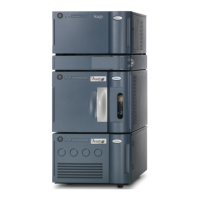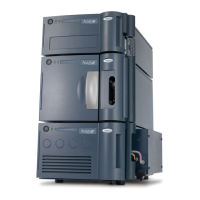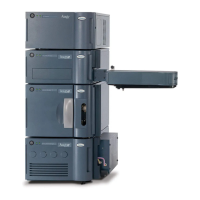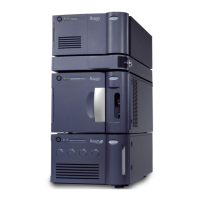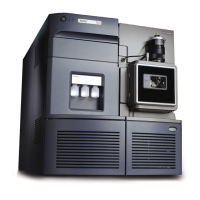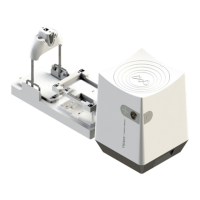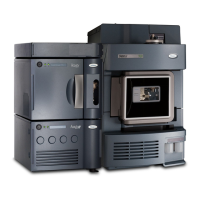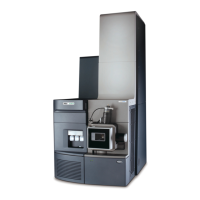Do you have a question about the Waters nanoACQUITY UPLC and is the answer not in the manual?
Device compliance with Part 15 of FCC Rules and potential interference causes.
System meets OSHA safety requirements evaluated by NRTL.
System is for analyzing compounds and introducing samples into a mass spectrometer.
Handle physiological fluids with precautions; treat specimens as potentially infectious.
Follow acceptable methods using pure standards to calibrate methods.
Run three quality-control samples representing subnormal, normal, and above-normal levels.
System designed for capillary-to-nano-scale separations, including solvent managers, sample manager, and detectors.
Monitors solvent flow in the channel, calibrated for water, acetonitrile, and methanol.
Guidelines for sample consumption based on system configuration and injection mode.
Exact-mass API/MALDI MS/MS platform for pharmaceutical and biotech industries.
Benchtop mass spectrometer for high-resolution, time-of-flight measurements.
Procedure for starting system modules, workstation, and software.
LED on the front panel indicating if the module is powered on or off.
LEDs indicating module state: idle, operating normally, or error.
Lubricates plungers and flushes salts from the auxiliary solvent manager.
Lubricates plungers and flushes salts from the binary solvent manager.
Guidelines for selecting wash solvents for optimal performance.
Steps for starting and verifying the TUV detector operation.
Procedure for shutting down the system between analytical runs.
Procedure for shutting down the system overnight or for a weekend.
Steps to configure MassLynx software for instrument control.
List of materials needed for system verification testing.
Steps to create instrument methods with binary solvent manager parameters.
Device compliance with Part 15 of FCC Rules and potential interference causes.
System meets OSHA safety requirements evaluated by NRTL.
System is for analyzing compounds and introducing samples into a mass spectrometer.
Handle physiological fluids with precautions; treat specimens as potentially infectious.
Follow acceptable methods using pure standards to calibrate methods.
Run three quality-control samples representing subnormal, normal, and above-normal levels.
System designed for capillary-to-nano-scale separations, including solvent managers, sample manager, and detectors.
Monitors solvent flow in the channel, calibrated for water, acetonitrile, and methanol.
Guidelines for sample consumption based on system configuration and injection mode.
Exact-mass API/MALDI MS/MS platform for pharmaceutical and biotech industries.
Benchtop mass spectrometer for high-resolution, time-of-flight measurements.
Procedure for starting system modules, workstation, and software.
LED on the front panel indicating if the module is powered on or off.
LEDs indicating module state: idle, operating normally, or error.
Lubricates plungers and flushes salts from the auxiliary solvent manager.
Lubricates plungers and flushes salts from the binary solvent manager.
Guidelines for selecting wash solvents for optimal performance.
Steps for starting and verifying the TUV detector operation.
Procedure for shutting down the system between analytical runs.
Procedure for shutting down the system overnight or for a weekend.
Steps to configure MassLynx software for instrument control.
List of materials needed for system verification testing.
Steps to create instrument methods with binary solvent manager parameters.
| System Type | UltraPerformance Liquid Chromatography (UPLC) |
|---|---|
| Maximum Pressure | 15, 000 psi (1034 bar) |
| Power Requirements | 100-240 VAC, 50/60 Hz |
| Flow Rate Range | 0.1 to 2.0 mL/min |
| Column Temperature Range | 20 to 90 °C |
| Sample Capacity | Up to 96-well plates or 2 mL vials |
| Detector Compatibility | UV/Vis, MS, ELSD, CAD |
| Gradient Mixing | Binary, quaternary |
| Software | Empower Software |
| Injection Volume | 0.1 to 10 µL |
